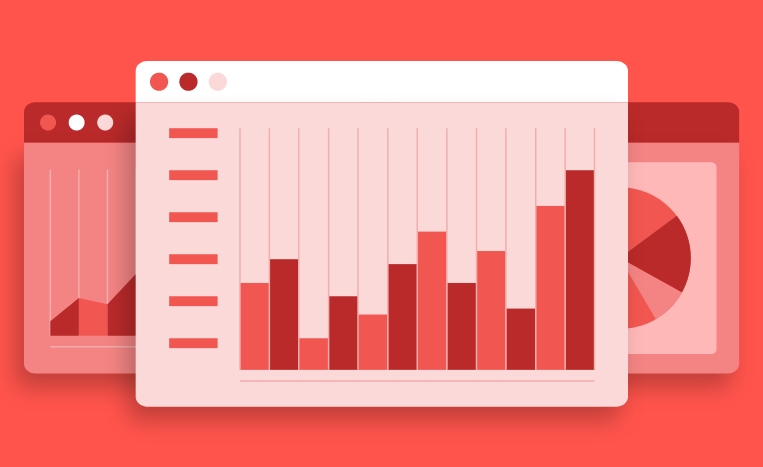What do Traffic Sources in Google Analytics 4 Actually Mean for Your Website?
05.13.25
Visitors land on your website from a variety of places. Some come from typing a question into Google, while others discover your brand on social media or through a paid advertisement. No matter where traffic sources in Google Analytics come from, business owners must understand audience search preferences for the sake of overall website performance.
Read on to see how partnering with Paradigm may help you improve your overall website performance and strategy.
What is Traffic in Google Analytics?
Traffic sources tell you where your audience is coming from. In Google Analytics 4, primary traffic sources are categorized as default channel groupings. Here are the 10 primary groupings:
- Organic Search
- Paid Search
- Direct
- Referral
- Organic Social
- Paid Social
- Display
- Affiliate
- Other
From there, you may narrow down each channel by source and then medium to pinpoint more details on the specific traffic source in Google Analytics. For example, if a member of your audience came to your website through a paid social media campaign. It would classify as such:
- Channel Grouping: Paid Social
- Source: Facebook
- Medium: Paid
Why Does Understanding Traffic Sources Matter
Knowing where your audience comes from is crucial to moving the needle on your business goals. Understanding your GA4 traffic sources may help your team measure marketing effectiveness, define user behaviors, optimize campaigns and identify growth opportunities. It also highlights red flags, such as drops in website traffic, technical issues or an influx of bot traffic.
Measuring your traffic source performance each month, quarter and year will give your business a chance to analyze the success of existing campaigns or pivot toward emerging opportunities.
Defining Top Traffic Sources in Google Analytics 4
For most businesses, traffic sources will fall into 7 out of the 10 main default channel groupings. These are Direct, Organic Search, Paid Search, Referral, Social, Paid Social and Email. Let’s explore each of these sources in detail.
What Does Direct Traffic Mean in Google Analytics?
Direct traffic refers to website visitors who type your URL directly into the search bar, click on a saved bookmark or enter your site through a source without tracking codes. Those searching for your business likely already know you or frequently visit your website.
What is the Difference Between Organic and Paid Search?
Simply put, organic search brings in unpaid traffic, while paid search results from clicking on a placed ad.
In Google organic search, people find websites through keywords. For example, if you are looking for an “ice cream shop near you,” Google may pull organic search results for nearby shops like Baskin-Robbins, Cold Stone Creamery or Dairy Queen.
Paid search gives a website placement priority. Each click is the result of someone clicking on a text or display ad promoted on Google Search.
What Does Referral Traffic Mean in Google Analytics?
Referral traffic equates to visits to your site from other sites through clickable links. This metric does not include search engines or direct traffic. While social media is tracked separately under “Social” traffic, in some cases, links from social platforms may be categorized as referral traffic if not properly tagged. However, one of the most common examples is if another blog uses a link from your website in their blog.
If you have a lot of inbound links pointing to your domain, you may see higher amounts of referral traffic.
How to Better Understand Organic vs. Paid Social Media Google Analytics Traffic Sources?
Any traffic that comes from social media happens when a social media user clicks through to your website from a social platform. From there, it reclassifies as either organic or paid, depending on whether a visitor found you through post content or an advertisement.
The traffic sources in Google Analytics may break down social media to pinpoint which platform a visitor came from by filtering the mediums. For example, if you were curious whether a Facebook or Instagram ad performed better, you could sort by paid social and then medium to compare performance rates.
What Does Email Traffic Mean in Google Analytics?
Email traffic refers to visitors who click links inside email campaigns that go to a website. This traffic type typically has tagged UTM parameters attached to it. That way, Google knows to categorize those clicks as email.
Without proper tagging, email traffic might be misclassified as “Direct” or “Other,” which may skew your analytics.
Taking Action with Your Traffic Sources in Google Analytics 4
Understanding your Google Analytics traffic sources is only valuable if your business uses that insight to guide your strategy. With the help of a Google Analytics agency, start by identifying which channels attract engaged users and which ones need optimization. From there, your team will be able to set benchmarks, monitor trends and double down on the sources that support your business goals.
By regularly reviewing your traffic data and aligning your marketing efforts with what’s working, you’ll build a smarter and more sustainable growth strategy.
Work with a Google Analytics Agency
Feeling overwhelmed by GA4 or unsure how to translate existing traffic data into results? Paradigm is here to help. As a Google Analytics 4 agency, we partner with businesses to uncover insights, fix tracking issues and turn trends into actionable strategies. Whether you’re looking to fine-tune your campaigns or better understand your audience, our team is here to guide you along the way.
Let’s unlock the full potential of your website through GA4. Contact Paradigm below to harness marketing and branding goals with comprehensive analytics.


